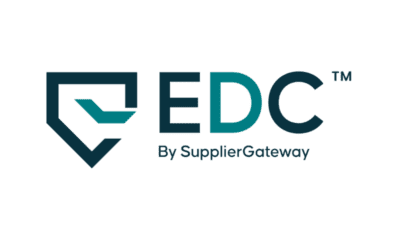COVID-19 has taught manufacturers a bitter lesson. The global supply chain doesn’t adjust well to unexpected or unusual incidents — so-called black swan events. Extended lockdowns, changes in consumer behavior, spikes in fuel costs and tensions among global trading partners have caused an unprecedented breakdown of the supply network.
Today’s organizations need to take action to create a more resilient supply chain. But how to do it is still up for debate. Planning for future disruptive events, whatever they may be, isn’t easy. Following are seven suggestions for manufacturers to consider.
Prioritize business continuity and cashflow. Before the pandemic, few would have anticipated that supply chain disruption could be so devastating to the global economy, or that a shipping container shortage could cause a cascading domino effect spanning the globe. Now we know. CEOs and their executive leadership teams are obligated to reexamine and make business continuity strategies a priority. Reliable financial analytics across the enterprise — including branches, plant assets, fleets, and inventory — are required. Disparate or siloed systems will make consolidating capital harder.
Understand risks. Continuity plans should cover potential issues from employee safety and workforce accessibility to inventory of raw materials and the ability to deliver goods and services to customers. Communications and connectivity are two cornerstone elements to protect. Such plans require one fully integrated enterprise resource planning (ERP) application for full visibility. In addition, advanced analytics with built-in artificial intelligence and machine learning provide predictive abilities. Such advanced tools, along with a digital twin, will help leaders explore “what-if” scenarios and determine risk and potential impact. all of these steps are necessary for planning courses of action in the face of an emergency. Knowing what to do in an emergency means a more resilient supply chain.
Know your suppliers’ suppliers. It’s no longer enough to be familiar with tier-one suppliers and the potential risk they might carry. Purchasing agents should have a complete picture of where and how resources originate, and routes associated with each step in the progression. Less than half of the companies in a recent McKinsey survey say they understand the location of their tier-one suppliers and the key risks those suppliers face. But only 2% have visibility into the third tier and beyond. That matters because many of today’s most pressing supply shortages, such as semiconductors, happen in deeper supply tiers. Modern supply chain tools can track product through those tiers. A command tower which helps geo-track shipments and routes enables visualization of goods movements in real time.
Ensure traceability and accountability. Manufacturers should insist on relationships with shared information and accountability. According to a recent Bain survey, fewer than 15% of executives feel their current capabilities allow them to deliver traceability consistently. A majority of companies have started to build some traceability capabilities, but struggle to integrate them or consistently create value. Resiliency is impossible unless buyers, suppliers and other parties along a supply chain are willing to share data and collaborate. The Reuters report Where’s My Stuff? suggests that businesses share sensitive data with partners by creating “safe rooms” where joint teams can analyze data, without the fear that competitive information can be accessed.
Balance sourcing. “Don’t put all of your eggs in one basket” is the maxim that applies to the supply chain. Manufacturers need to build relationships with multiple suppliers in various geographies. Disruptions in the supply chain have rekindled interest in bringing suppliers, plants and warehouses closer to the end consumer. For many verticals, this is a challenge that will play out over years, with manufacturers needing to balance costs and reliability. When the supply chain planning tool is tightly integrated to the ERP and backend financials, companies can better grasp the financial impact of moving operations closer to the customer.
Throw out just-in-time delivery as the default strategy. This common lean concept has worked for decades, but the current disruption has proved that a just-in-time strategy for stocking the warehouse can leave manufacturers vulnerable. Safety stock that’s set very low doesn’t consider the mass interruptions that can occur. Automakers such as Toyota, Volkswagen and Tesla are stockpiling batteries, chips and other key parts. This also ties up capital, though, and consumes warehouse space, creating other challenges. The ideal solution is yet to be determined. Manufacturers will need to evaluate each part and component for its availability, risk, and alternatives. This isn’t just a supply chain issue; it’s also one of C-level strategy. Like most top-level strategies, it requires reliable analytics, easy-to-use reporting tools, and data-driven predictive insights.
Back to the drawing board. In some extreme cases, manufacturers might need to look to engineering to alter designs, specifying parts which are more readily available and from multiple sources. Again, integrated software tools make this type of strategic planning easier and more productive. Collaborative tools for communication between teams and advanced product lifecycle management (PLM) applications help manage this type of product development, tracking milestones and testing, while documenting decisions.
The supply chain will continue to be in the spotlight as consumers, manufacturers and suppliers are forced to make compromises and adjust. The ideal answers might be slow to gel, but it’s clear that manufacturers must take action or risk being caught with stockouts and cancelled shipments. While short-term solutions can help with some immediate needs, knee-jerk responses like stockpiling can be more detrimental than helpful. Companies must think through a holistic strategy that analyzes customer retention risks as well financial impact. C-level officers need to become engaged, helping to evaluate options, devise creative solutions and plan long-term strategies. The supply chain can’t be repaired overnight, but getting started is essential. More black swan events can strike at any time.
Andrew Kinder is senior vice president of industry and solution strategy with Infor.












